Two corners of Brooklyn’s historic Navy Yard will be connected by a small test bed for quantum networking, a first step toward a future “quantum internet” that promises to transform computing and make communications untappable.
The effort, by a startup company called Qunnect, will join dozens of experiments around the U.S., Europe, and China, but would be the first commercial quantum network in the country, and the first to use only small, room-temperature devices. Such tools could make it easier to link quantum computers across the planet, opening the door to more practical uses of the technology in research, defense, finance, and other yet-to-be-determined applications.
“We can have these networks go all the way from here, coast to coast, and eventually global,” says Dr. Noel Goddard, the CEO of Qunnect. In addition to testing a protocol for sharing quantum information across conventional fiber-optic lines, the 12-person startup will use the network to test a group of quantum networking hardware that can fit into the server racks of existing telecom buildings.
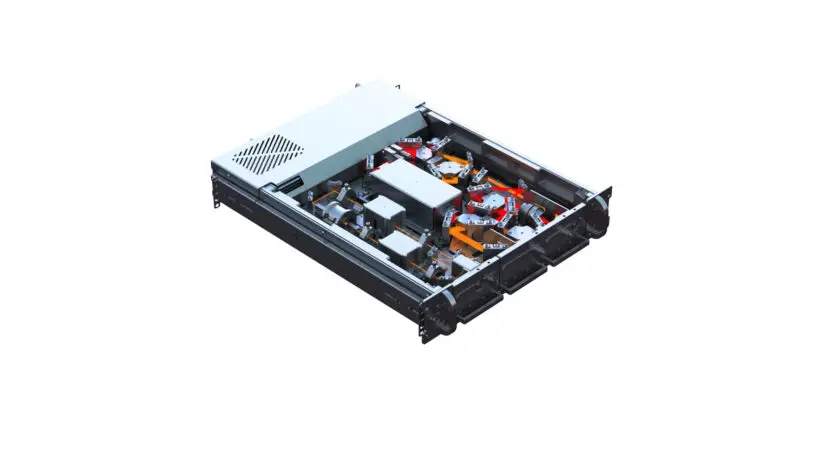
Its flagship product, spun out of research at SUNY Stony Brook, is a type of device thought to be crucial to establishing the “magic” of quantum entanglement across a fiber line, called a quantum memory. The machines use rubidium vapor to briefly store photons’ quantum information, with all of its weird uncertainty, so that the information can be repeated across a long-distance fiber network without disturbing it along the way. But unlike many quantum machines—often sprawling tabletop contraptions that rely on cryogenic cooling, vacuums, and other delicate equipment—Qunnect’s memory machine operates at room temperature and fits inside a box the size of a large desk drawer.
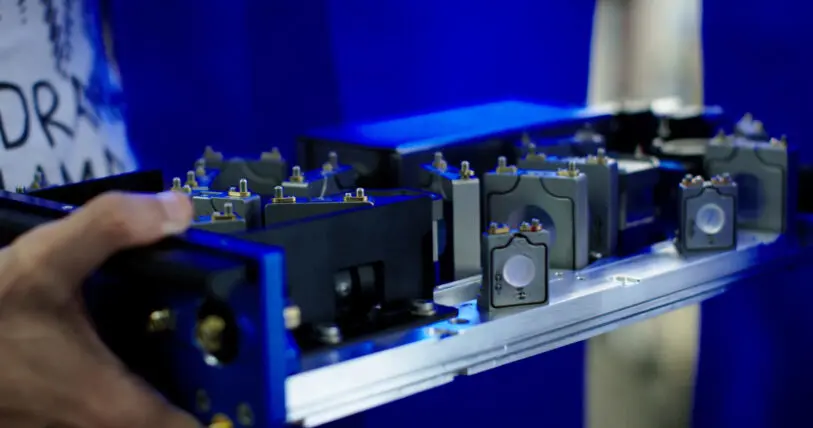
“When somebody does the next great thing in quantum networking, it’s inevitably due to the fact that laboratories with tens of millions of dollars of equipment connect to other laboratories with the same, in very specialized circumstances, to try to demonstrate something can work,” says Goddard. “We are, to my knowledge, the only company really focused on trying to build devices that could actually sit in a fiber hub and support the same protocols.”
Qunnect’s sold just three of its memory machines so far, to Brookhaven National Lab and Stony Brook University, at a reported price of around $100,000 apiece. But a number of government and defense labs, along with big telecom and tech companies, from Amazon to Verizon, are paying close attention. The device has already received millions in backing from the Department of Energy and other federal and state agencies. And last week, Qunnect announced its largest endorsement yet: $8 million in funding, in a series A round led by Airbus Ventures and including The New York Ventures Fund, Impact Science Ventures, Motus Ventures, and SandboxAQ, a post-quantum security company Google spun off earlier this year.
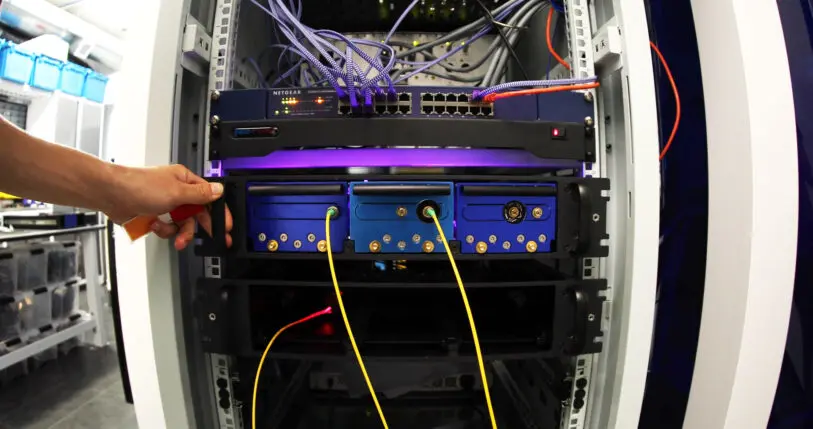
The new money will help build the test bed, which Qunnect plans to start operating by the middle of next year, when it will open it up to researchers and customers in government, finance, and telecom. These experiments will help the company learn more about a variety of proposals for building quantum networks, and, it hopes, position it as a device supplier for the whole quantum internet.
“Our dream going forward is that, depending on what the network node does, you need a set of our instruments, which will come in a series of rack drawers,” says Goddard. “I think you could think of us as being analogous to a Cisco in that way.”
What quantum means
Quantum mechanics, the physics of very small things, is so weird that Einstein was sure it couldn’t be right. But he was wrong. In short, quantum computing, first described in 1980 by physicists including Richard Feynman, takes advantage of that physics to perform powerful kinds of calculations. Problems that could take years for a classical computer to solve could be dispensed within minutes by a quantum computer. What’s different is that these machines don’t use bits to do their work—a one or a zero—but qubits, or quantum bits, which are representations of the quantum states of those weird subatomic particles.
According to quantum mechanics, where an object can be both a particle and a wave, at least until you measure it, a qubit exists as both a zero and one. Superposition, as it’s known, means that two of these delicate building blocks can hold four values at the same time, three qubits can hold eight values, four can hold 16, and so on; for each new qubit, a quantum computer’s power increases exponentially. The race is now on for quantum machines that can achieve what’s known as quantum supremacy, solving problems that classical computers can’t practically address. Google claimed to have reached one milestone in 2019, with a proof-of-concept problem for NASA. IBM, which questioned some of Google’s findings, has, among other things, recently built a fridge for quantum computers that is 100 times colder than outer space and could eventually house quantum computers with 4,000 qubits.
Why? As in the early days of computing, or the days before the internet, the future applications here—in chemistry and pharmacology, astronomy and meteorology, defense and finance—are hard to imagine, says Mehdi Namazi, one of Qunnect’s cofounders. But eventually, “the technology is so deeply going to affect every individual across the planet.”
The hype is loud, but as the technology inches forward and some use cases become clearer, growing numbers of companies and investors are joining governments and big tech at the quantum computer party, pouring in billions. The $250 billion U.S. Innovation and Competition Act, which designates quantum information science and technology as one of the National Science Foundation’s 10 key focus areas, is expected to spur more investment. In quantum networking, government-backed efforts in Europe and Asia are already thought to have an advantage, but the U.S. CHIPS Act, passed in August, aims to catch up, with $500 million over five years to build large-scale quantum network infrastructure around the country.
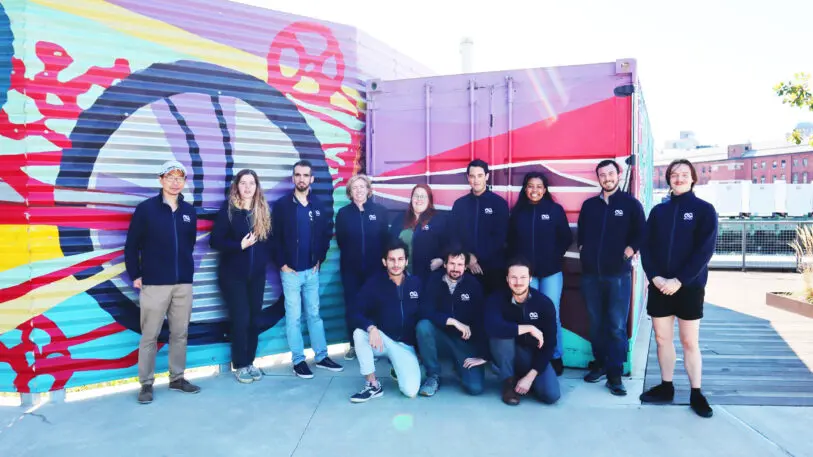
To imagine what this could mean, it helps to think about the physics. Central to quantum computing and networking is a strange behavior called entanglement, whereby the properties of two distant particles can become correlated, so that operating on one affects the state of the other. This still doesn’t make sense; Einstein called entanglement “spooky action at a distance.” But it’s real: in theory, even infinitely distant particles can become entangled. Uncovering some of the principles of quantum information science just earned three scientists the 2022 Nobel Prize in Physics. “Being able to manipulate and manage quantum states and all their layers of properties gives us access to tools with unexpected potential,” the Nobel committee says on Twitter.
Once quantum computers achieve quantum supremacy, our current internet connections, which use light to send measly ones and zeros, won’t do. Quantum computers will need to be connected to each other and their users through entanglement. And that offers a brand-new kind of security. If you can establish a random correlation between two distant nodes on a network, you can generate a secret key between those nodes. And because observing a quantum system necessarily alters it, any attempt to hack the system garbles the signal.
“Basically, the moment that you’re suspicious that there’s an eavesdropper on the line, you just create a new key,” says Goddard.
This is important, because there’s a dangerous flip side to quantum computers: The eventual superiority of quantum systems means that our most encrypted data is already vulnerable to whoever builds the first workable system.
“Bad players have been harvesting data for a long time, which they hope to crack whenever a quantum computer comes to bear,” says Goddard. There are Various predictions about when this will happen; in 2020 Google CEO Sundar Pichai warned that quantum doom could come within five years.
But, says Namazi, quantum networking could help, transforming if not ending the battle for digital security. “Quantum encryptions are supposed to end that debate and become this—I hate to use the word ‘unhackable’—but these networks where their security doesn’t depend on technology.”
For now, quantum is cutting-edge science and an apparent gold mine, but also, like the race to build faster GPUs, a global arms race. Alongside a zoo of quantum computers, researchers around the world are already simulating and building quantum networks, linking together labs much in the way the early internet was assembled. An alliance in Europe, building intercountry networks, “actually is a little ahead of the U.S. on building test beds,” says Goddard. In recent years, researchers in China have made remarkable strides, demonstrating quantum connections over thousands of miles using satellites and a set of ground stations.
In the U.S., Argonne National Laboratory’s network, the Chicago Quantum Exchange, now has six nodes over 124 miles, strung between suburban Lemont and Chicago’s South Side. Other efforts are afoot in Arizona, in Washington, DC, and Berkeley. In recent years, Qunnect’s machines were used to build a circuitous 87-mile quantum network on Long Island, between Stony Brook and Brookhaven National Laboratory.
Eventually, Qunnect’s test bed could connect to that network; the necessary dark fiber “exists between here and there,” says Goddard. But for the sake of research, the company is focused on building out its own network in the city. “We hope to become the hub that all other quantum companies want to come to,” says Goddard. “That would be cool.”
Quantum memory without all the cooling
By operating at room temperature—a warm 40 degrees celsius—and fitting inside a server rack, Qunnect’s quantum memory devices can sit alongside traditional telecom equipment. But they also address a more fundamental challenge for quantum networking.
To entangle two qubits between two quantum machines, you can send their photons across today’s fiber-optic cables. But this is limited to systems that are only a few miles long: an effect known as light attenuation means photons can get lost while traveling down the fiber-optic cable. First-generation quantum internet, like China’s record-setting network, relies on repeater nodes to convert quantum information into digital data, so it can be amplified and passed along. But these repeaters, so called “trusted nodes,” are inherently vulnerable to attack or eavesdropping; the NSA has even warned against their use. “It’s a very ironic name,” says Namazi.
By contrast, Qunnect’s approach, known as entanglement distribution, transmits information about qubits without damaging their quantum state, in what’s known as an entanglement swapping operation. “And that’s where the quantum memory comes in,” says Goddard. “It’s a way to store and release photons on demand without damaging their quantum state.”
The quantum information being stored in this case is the state of a photon. To create long-distance entanglement between two nodes on a network, Qunnect’s devices simultaneously generate a pair of photons at each node by exciting atoms with lasers. In each pair of photons, one is tuned for optimal storage in the quantum memory; Qunnect’s system stores the quantum state of the photon in a vial of warm rubidium vapor.
As one photon of each pair is held in memory, the other photon—which possesses a standard telecommunications frequency for fiber transmission—is sent along the network to a swapping station, where it is entangled with a photon from the other pair. The photon in memory is then cleared from the vaporous cache to make way for information from the next photon. With a daisy-chain of quantum memory devices, each “swapping” a photon’s information to a new photon, quantum information can travel unhindered across the network. “If you build these networks eventually,” says Namazi, “there is no version in which even we know what’s going on [on the network], which is something everyone loves about quantum.”
Quantum memory, unlike your computer’s hard drive, is plagued by noise and doesn’t last long. But Namazi says that after removing the noise photons, its latest quantum memory can store and release the quantum state of single photons with a fidelity of around 95%. And it can store a single photon for up to 0.8 milliseconds, about a hundred times longer than other room-temperature devices, and long enough to sustain communication across a “metropolitan scale” quantum network.
The machine builds on research by Namazi and his cofounders, but Goddard says the company’s team of scientists in physics, engineering, and machine learning, many hired in the fall of 2020, “were really responsible for all of the amazing things that have happened with quantum memory.” Developing a small room-temperature system has also opened up other tantalizing possibilities, Namazi says. “Can we ever put these technologies on a chip, like something similar to that in your cell phone?”
Help from a powerful source
None of this would exist without government cash. Quantum hardware “needs a tremendous amount of developmental dollars to get from nothing to something,” says Goddard, “and that’s pretty scary to early-stage investors.” In particular, a March 2020 grant of $1.5 million from the Department of Energy “really made the difference between being able to stay open or not,” she says. The company landed another $1.8 million from the DOE in May—in addition to least $2 million in previous support from the Air Force and the National Science Foundation. New York has chipped in too, leading the company’s seed round and participating in the latest investment. “We wouldn’t be here without both [federal and state money].”
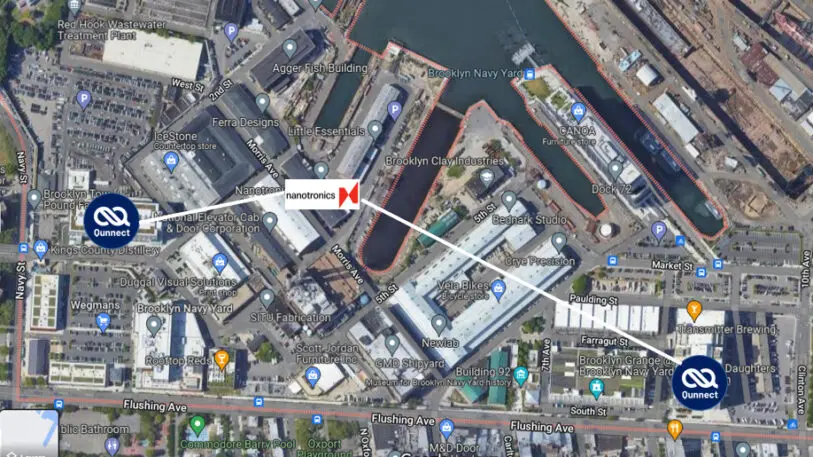
Just as the grant money began flowing in the spring of 2020, COVID arrived, shutting down the Stony Brook campus on Long Island where Qunnect had its offices. That led Goddard and her team to relocate to space at the Navy Yard, where they could come and go freely. First opened in the early 1800s as a center of shipbuilding, the sprawl of buildings in south Brooklyn fell into disrepair for decades; now it hosts a mix of startups, studios, and factories in space leased out by the state’s economic development corporation. The growing entrepreneurial scene, and the New Lab tech incubator in particular, “was definitely one of the reasons we were attracted to this,” Goddard says.
There are a tangle of questions to address, not just about how you cut down on noise but how you communicate between the regular internet and the quantum version, and how you design quantum networks, so you can connect them together into a planet-scale internet.
In a sense, the future of quantum computing depends on resolving these questions: New applications won’t emerge until there’s agreement about how to send information between quantum computers. “Part of the landscape that we have to climb over right now is the fact that there are no standards, like there were at the time of the digital internet,” says Goddard, “and no one’s decided that everybody needs to engineer to work by a certain standard.”
The Brooklyn test bed will allow Qunnect and anyone else interested in quantum to play with its memory devices, test new protocols, and untangle some of the many questions still looming over this newfangled internet, Goddard hopes. “What we’ll learn from this is, ‘what are the 10 problems we haven’t thought of yet?’”
Recognize your brand’s excellence by applying to this year’s Brands That Matter Awards before the early-rate deadline, May 3.
